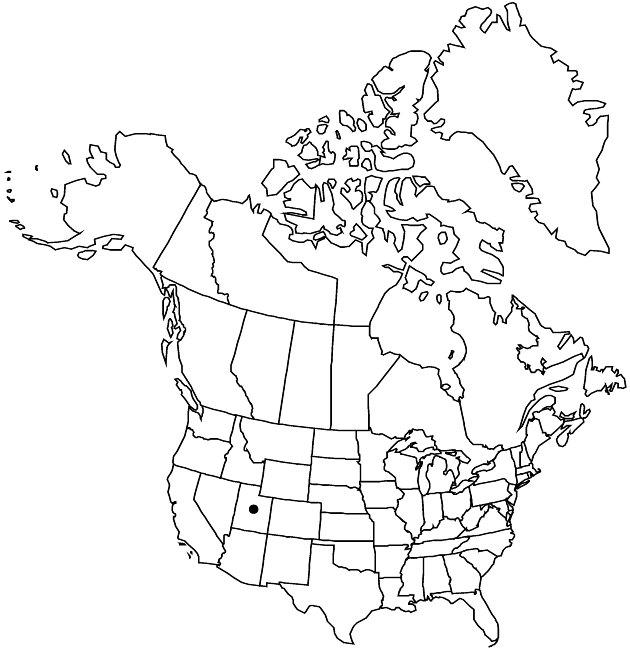Dieteria bigelovii var. commixta
Sida 20: 1394. 2003.
Endemic
Basionym: Machaeranthera commixta Greene Pittonia 4: 71. 1899
Synonyms: Machaeranthera bigelovii var. commixta (Greene) B. L. Turner Machaeranthera canescens var. commixta (Greene) S. L. Welsh
Leaf-blades lanceolate to oblanceolate, mid 20–60 × 5–12 mm, margins usually entire, sometimes dentate or serrate, faces glabrous or sparsely puberulent, often sparsely stipitate-glandular. Involucres broadly turbinate, 7–13 mm, widths 1–1.5 times heights. Phyllaries 25–50, 1–2 mm wide (at midpoint), apices acute to acuminate, 2–4 mm. Ray-florets 12–30.2n = 8.
Phenology: Flowering Jun–Sep.
Habitat: Grasslands, meadows, in subalpine coniferous forests
Elevation: 2400–3400 m
Discussion
Variety commixta is found in and near the southern Wasatch Mountains.
Selected References
None.
Lower Taxa
None.
"-1.5timesheights" is not declared as a valid unit of measurement for this property.
... more about "Dieteria bigelovii var. commixta"
introrse +
connate +
distinct +
herbaceous +
acute;acuminate +
scarious +
hirsute +
papillate +
continuous +
decurrent +
indurate +
1-nerved +
linear;oblanceolate;linear;oblanceolate;lanceolate;oblong;obovate;ovate +
ribbed +
stigmatic +
barbellate +
persistent +
40;50 +
absent +
absent +
dimorphic +
appressed-hairy +
staminate +
Utah. +
straight +
distinct +
proximal +
1;5 +
bisexual +
dispersed +
singly +
indeterminate +
surrounding +
turbinate +
10mm;25mm +
1mm;2mm +
lanceolate;oblanceolate +
5mm;12mm +
alternate +
erect +
2-carpellate +
inferior +
attached +
anatropous +
persistent +
tough +
thick +
absent +
connate +
1-nerved +
persistent +
distinct +
falling +
unequal +
Sida +
2003 +
pistillate +
absent +
fertile +
epaleate +
pitted +
convex +
fibrous +
exalbuminous +
modifed +
5;10 +
Endemic +
alternate +
branched +
lanceolate +
2-branched +
glabrous +
Dieteria bigelovii var. commixta +
Dieteria bigelovii +
variety +
shorter +
taprooted +
